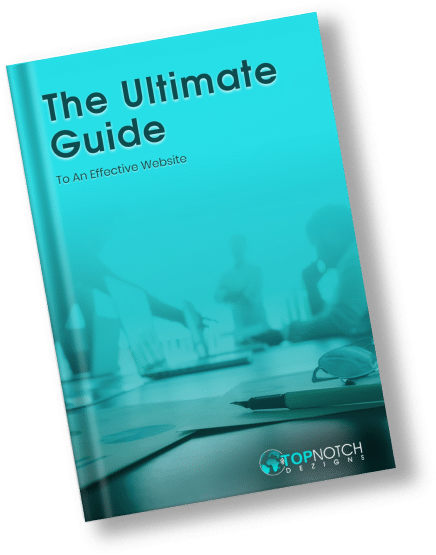For far too long, designs of digital systems have typically neglected the end user. Even now, you can see usability taking a backseat on the altars of extravagant software features and various technical capabilities. However, a professional digital design effectively combines functionality and usability; its functions reflect its purpose and user-friendliness catering to its target audience. From the very onset, this requires following a user-centered design process.
Table Of Contents
What Is User-Centered Design?
User-centered design (UCD) places users at the center of product design and development. It comprises strategic processes that work to create an exceptional user interface (UI) and user experience (UX) combination. By putting users first in your design process, you are more likely to create products that meet their expectations and increase their satisfaction.
You may look at the relationship that businesses and consumers share as a form of corporate courtship where the former constantly seeks newer and smarter ways to woo the latter. The sheer number of available “suitors” can be overwhelming and the competition is always fierce. Any business hoping to stand out needs an edge over the crowd. An important aspect of the user-centered design process requires knowing your consumers and using the knowledge you gather to your advantage.
Understanding your target audience and its needs is how you single yourself out from the multitude that offers generic experiences. Results of research by Zippia surrounding the importance of user experience highlight that poor usability is responsible for around 70% of failed online businesses and is perhaps one of the biggest culprits in this digital age.
The same source also reports that over 80% of users steer clear of websites with bad user experiences. Turning to user-centered web design gives you the means to escape these bleak statistics by ensuring that you give your target audience an outstanding experience.
Looking to Grow Your Brand Online?Request a Quote
The Link Between User-Centered Design, UI, and UX
User experience is an essential part of web design because it involves how the end user perceives your website or app. One of the aims of user-centered web design is to create stellar user experiences. As a broad part of design thinking that engages the user at every stage of the creative process, UCD envelopes UI and UX.
It dictates the trajectory of the user interface and addresses how that affects the user experience as a whole. Consequently, users can see that you’ve taken their experiences into account at every touchpoint.
However, tailoring your design to meet user expectations might seem easier said than done, and it begs the question “How?” All the user-friendly design tips notwithstanding, the process requires user evaluation. It begins with knowing what users want rather than working based on assumptions.
With user-centric design, you exploit situational and environmental factors to woo consumers. These include traits like age, social status, education, and location. A good deal of data collection is required to know what influences design perception in your target user. Sources you may turn to include:
- Social media pages
- Census data
- Surveys
- Beta testing
- Interviews
- Online forums
These sources offer insights into user behavior and expose trends that affect their predispositions towards UI/UX design.
What Are User-Centered Design Principles?
Once you complete the user evaluation process and have a solid grasp of what drives positive engagement, it’s time to proceed with your design. However, you need to follow eight web design principles that revolve around user-centricity to build a website or app that truly focuses on its users.
1. Determine the Context of Use
Start by asking why users need your website or app. What purpose does it hope to serve? Your design should aid usability in a way that seeks to achieve the purpose of your digital product. Once you establish the context of use, it’s easier to determine user expectations and the tasks they need to accomplish using your website/app.
By keeping in mind the overall aim of your website/app, you can tailor your design to help users achieve it in optimal conditions. For instance, if you’re developing an eCommerce website, users will expect to see the available variations of an item. Rather than just stating them, add a slideshow of the product in various avatars. Improving the UI and UX of an eCommerce website can help mimic shopping in a brick-and-mortar store and create an immersive user experience.
2. Design With Users in Mind
When it comes to principle-centered design, you need to focus on your target audience during every stage of the design process. From aesthetics to content, ensure your design revolves around the end user. Remember that UCD is an intensive process that requires meticulous planning, where you need to strategically place every dot so it appeals to your target user. After all, it’s the extra effort that separates these designs from the rest.
Don’t be afraid to go the extra mile because your users will recognize and appreciate the added effort you put in to accommodate them. At each level, seek to ease their interactions with your design. This is why you need to do more than what’s convenient for you and do what’s convenient for your audience. In all your design-related efforts, remember to put your end user first.
3. Reduce Cognitive Load
Cognitive load refers to the amount of mental effort required to process information. There is a safe side where the brain processes data smoothly and an overwhelming one that strains the mind. Your web design feeds information to users. As they explore your website/app, their minds process the information they see. Unnecessary complexities can overwhelm them and strain their mental capabilities.
Remember that users need your website/app to meet specific needs and while your design contributes significantly to their experience, it should neither distract them nor get in the way. The design should complement its purpose, not overshadow it, which is why you need to avoid unnecessary elements that will likely strain users.
4. Provide Intuitive Navigation
Intuitive design and easy navigation go hand in hand. This ensures that adequate navigation mechanisms like action cues and suggestions are in place, and it helps users understand how your website/app works. For instance, at every stage of their intended tasks, users should be able to tell where they are with elements like page indicators and scroll bars. Additionally, if they wind up in unwanted territory, there should be a visible route for backtracking.
A non-intuitive design creates confusion. Users will likely feel lost while interacting with such a website/app. It’s like designing a car with hidden door handles. It presents an obvious problem for the user who would like to get in and drive. Users should be able to follow a clear path through your design while performing their intended tasks. This also helps increase conversion rates because it guides them toward desired actions.
Looking to Create a Marketing Strategy?Request a Quote
5. Offer Adequate Feedback
This principle of user-centered design involves responding to user activities within your website or app. From your responses, users know how to proceed as well as when certain actions are successful or otherwise. Undertakings such as making a purchase or signing up for a newsletter require feedback so users know whether their actions are complete or still processing. They need to know that you are working to accomplish their desired goals and a feedback loop is how you keep them informed.
Beyond ordinary text, visual cues like simple pop-ups, animated loading screens, or a change in appearance can also help provide positive reinforcement so users know they are on the right track. This makes way for effective interaction design, a key feature for relating with your user beyond the typical click-and-scroll interface.
6. Use Simple Language
While your website or app should have user-oriented content, you need to ensure simplicity and clarity to accommodate users from all walks of life. This involves using clear and understandable language because unnecessary technicalities limit your user base to individuals with special knowledge.
Simplify the dialogue by focusing on information and text relevant to users and their desired tasks. When it comes to unavoidable technicalities, you need to explain them in simple terms so users understand what you wish to communicate.
7. Provide Support
A user-centered design process gives you the means to foresee where users might get stuck or face friction when using your website/app. In response to this, provide easily accessible links to help pages and other forms of support. Providing assistance through live chat may also be beneficial. Real-time support offers users a means of communicating their concerns when other forms of online assistance fail.
Planning and making adequate provisions for any trouble users might encounter is a loud statement telling them you prioritize their needs. Identify places where your users are likely to need assistance and ensure that they get it in quickly and efficiently.
8. Adopt an Iterative Design Process
An iterative approach leaves room for improvement. It allows your design to evolve, constantly aligning with the changing needs of your audience. As you understand your users better based on their interactions with your design, you can gradually tweak some aspects of it to accommodate more of their needs.
With more user insight, you can constantly reassess your design and iterate subsequent releases or updates. This means the user-centered design process extends beyond the launch of your website/app. It still guides and informs subsequent redesigns and upgrades, ensuring that your website/app maintains its usability standard.
The Importance of User-Centered Product Development
User-centered development is important because you are designing a product, which, in this case, is a website or app, for your audience. Additionally, it isn’t just so users can acknowledge what you’ve done, you also want them to engage with it and enjoy the process.
You may think of this as getting a gift for someone you care about. The thought put into making the selection shows how you feel about the person. For example, if your friend loves red shoes, you don’t gift white ones just because they’re in vogue.
If you want users to engage with your product as frequently as possible, you need a design that encourages them to act accordingly. Creating a website/app around the end user leads to superior usability, a key element in delivering a top-notch user experience and gaining a tremendous business advantage.
Bear in mind that modern-day consumers understand their value in the business world and before committing to any brand, they demand that you make them a priority. User-centered design is how you prove your undying loyalty to your target audience.
Benefits of User-Centered Design
Implementing the eight principles of web design in user-centricity bears obvious advantages for consumers, and business owners stand to gain significantly as well. Here are some of the top benefits of user-centered design for your business.
- Get a competitive edge. With a design that feels personalized to web users, they will be more inclined to engage with your brand. The more you win the trust of consumers, the more you stand out in your industry.
- Increase conversion rates. The fewer the bumps on the road, the more enjoyable the journey. Easy usability offers a smooth user experience that effortlessly guides users toward desired actions.
- Expand your business. Word gets around fast. Just as talk of poor user experiences circulates easily, news of positive UX also travels quickly. When users enjoy the time they spend interacting with your design, they communicate this with others. Social networking platforms make the process easier, where a single tweet or post can gain significant traction.
- Augment the design process. By having defined goals for your design, you can avoid several design misses while maximizing your resources to hit a clear target. Ideally, you need to spend time and effort to design something your users will love instead of repeatedly returning to the drawing board.
- Reduce project risks. With higher chances of satisfying your end user, your design process becomes less risky. Instead of building your entire website/app on assumptions about what users might like, user-centered design helps determine their preferences, consequently lowering your project risks.
Looking to Grow Your eCommerce Revenue?Request a Quote
Conclusion
You get to leverage several elements in the digital sphere that produce better responses from users and user-centered design is among the most important. By making the design more about the user, designers and businesses can focus on creating optimal user-friendly websites and apps that people look forward to using. The goal is to balance your business requirements with the needs of your users, thereby creating a two-way channel of effective web design.
For many, navigating the nuances of users may seem daunting. Fortunately, you don’t have to handle the complexities on your own. Instead, you may consider partnering with a web design agency that will follow a user-centered design process to brilliantly combine aesthetics and functionality.








